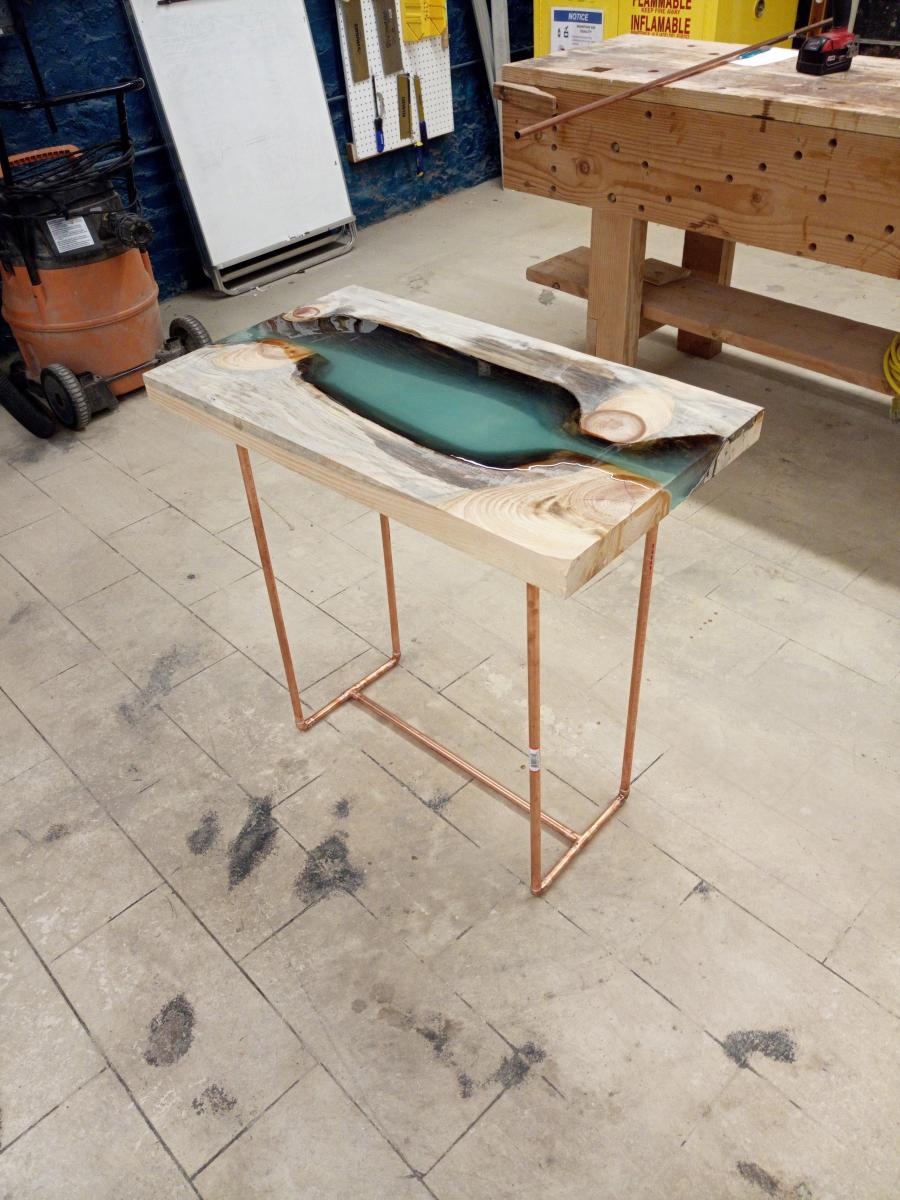
Skill Level
Intermediate
Project Hours
4.0 hours
Project Required Badges
Project Advice
- Pay close attention to sealing the resin chamber; it is a sticky mess to clean up
- Be sure to read the resin mixing instructions from the resin supplier; some brands are finicky
- If using copper, DO NO use Type M and DO NOT use 3/4" ø. I have yet to have it not wobble out of control.
- Sanding the wood before filling can really make it easier to finish the wood.
- Embed fun things in it!
It's a table!
A starter project involving cutting a live edge slab in half and gluing it back together with resin. This project mainly requires basic resin use and standard wood prep.
